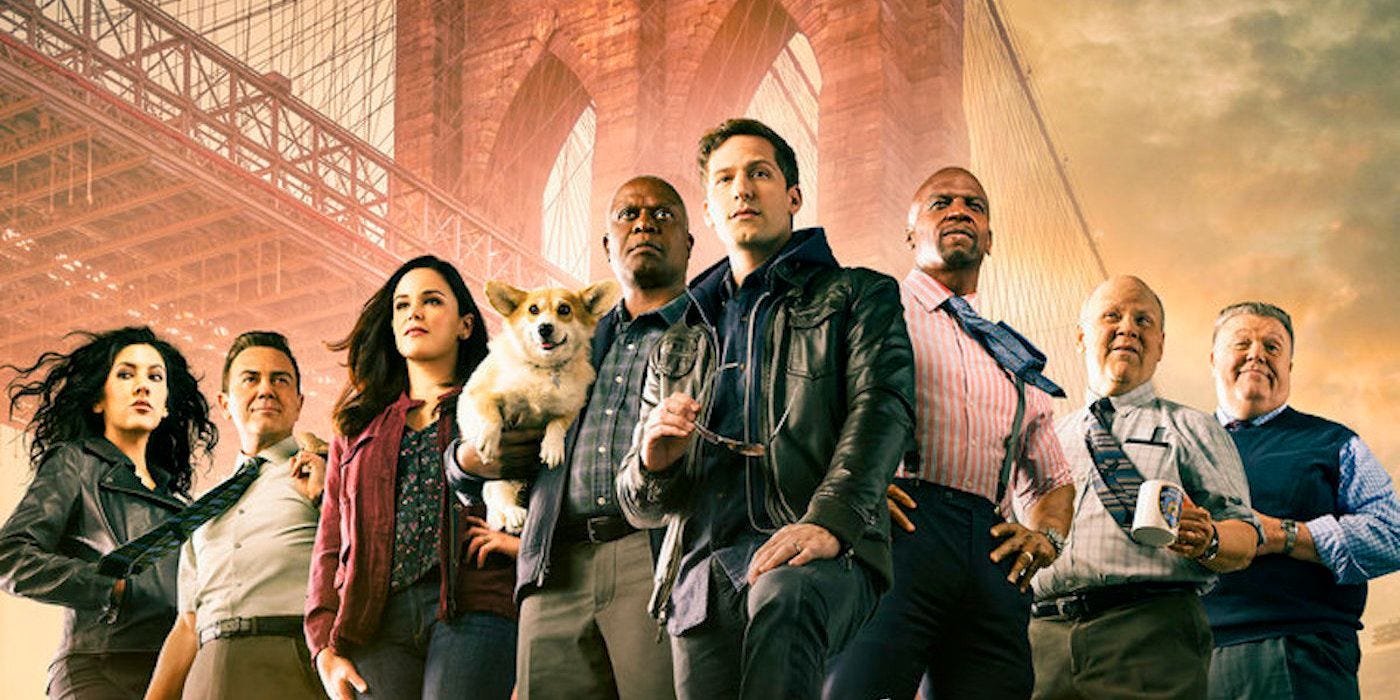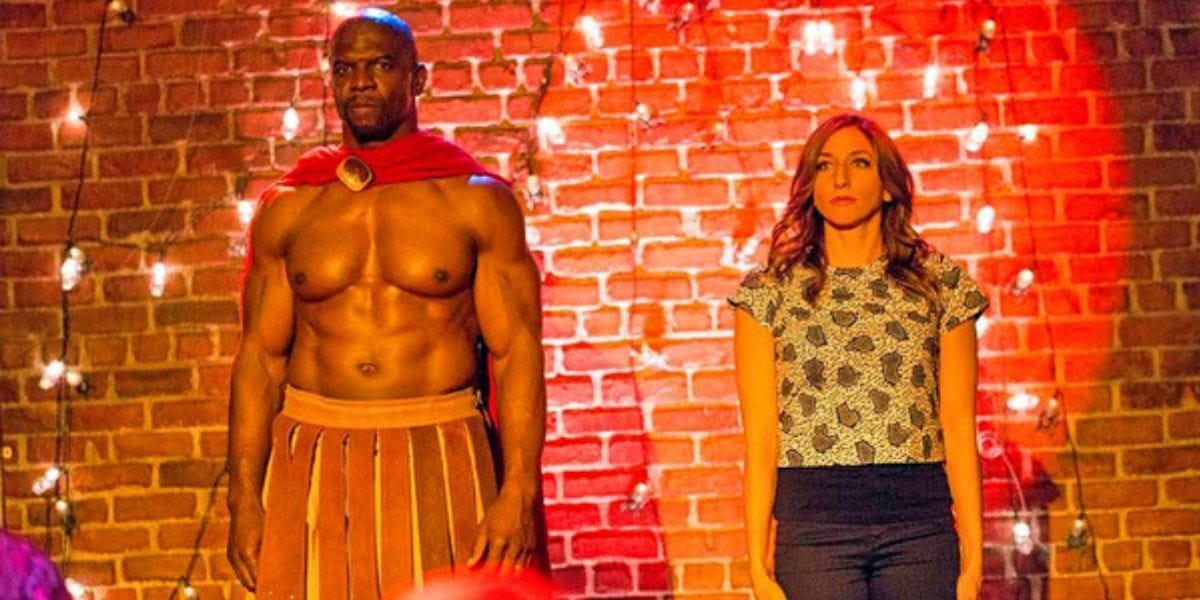How Terry Jeffords Subverts Masculinity on Brooklyn Nine-Nine
Redefining Masculinity in TV - part 1
Introduction
Brooklyn Nine Nine is one of the most popular sitcoms of the 21st century, and one of my favourite things about it is its portrayal of men and masculinity. Whilst many sitcoms rely on tropes and stereotypes about traditional masculinity, B99’s men encapsulate the values and traits of a more progressive society. In this miniseries, I will be discussing Sergeant Terry Jefford (Terry Crews), Detective Jake Peralta (Andy Samberg), Captain Raymond Holt (Andre Braugher), and a few others.
What Do We Mean by "Traditional Masculinity"?
Before discussing the characters, I want to clarify what I mean by 'traditional masculinity'. Not all of it is inherently negative - but issues arise when TV shows (for lack of a better word) propagate somewhat problematic portrayals of what men should be - what is commonly referred to as “toxic masculinity”. This can be as simple as the idea that men should be strong, stoic, hard-working. It can also include the belief that men shouldn’t cry in public, be artistic, emotional or sensitive. Or the idea that men must be the providers for their family. The problem is when representations of the latter qualities are deemed as lesser, or weak.
Meet Terry Jeffords: Strength Without Stoicism
Sergeant Jeffords is someone who I believe displays his masculinity in one of the healthiest ways on television. Played by Terry Crews, Sgt. Jeffords is a fatherly figure towards members of his squad, as well as a father of twins and another daughter. Jeffords is proficient in art, dancing, and playing the flute (The Muffin Man), and has “the exact physique and personality of the Kool-Aid man.” There are two main reasons as to why I love Terry Jeffords - besides him being the most heartwarming yet equally hilarious character on the show: his emotional openness and his comfort with his own masculinity.
Why Terry Jeffords Matters
The reason why I am singling Jeffords out in this regard is that, whilst other male characters, such as Charles Boyle, often cry and laugh and show sadness, Jeffords is not a typical person – 6 foot 2, and “a tight 230” pounds of muscle. Characters with this kind of build are often portrayed very differently – as stoic, domineering, emotionally repressed. A lone tear is shed only at funerals.
Breaking Stereotypes: Black Masculinity on Screen
In addition, there is the added layer regarding racially charged stereotypes around black men – uncultured thugs who are prone to violence and acts of aggression. In the past (and even recently) “coons” and “Uncle Toms” were prevalent depictions.
A History of Tough Guys
I’m sure you can all remember a movie or show that has a “tough guy”. 6 foot 4, played NFL or rugby in college, probably peaked in highschool. Characters such as Tyler Durden, Patrick Bateman, Rambo (from the movie, Rambo), Channing Tatum’s character from 21 Jump Street.
These men act first, think later, talk with their fists, and bury any trace of vulnerability under layers of violence or perceived confidence. They’ve become a symbol of a particular brand of masculinity that prizes dominance, physical strength, and emotional suppression.Terry Crews’ previous characters also embodied some of these traits.
Subversion
I’ve talked a lot about how Terry ‘subverts’ these tropes, but I never actually went into depth or provided examples. So here we go!
Subversion in Action: Jeffords and His Emotions
I mentioned earlier in the “History of tough guys” that the only emotions shown were anger and confidence, but Terry displays an array of feelings ranging from intense sadness to joy over the tiniest things (full fat Greek yogurt with a touch of honey). When thinking about his daughters growing up, he suddenly breaks into tears. Of when creating Jeffords’ Junction, playing with train tracks, and being the “Giver of Life”. He also becomes extremely happy when he hears about the good news of coworkers. People may say that he is also quick to anger - that’s true, he can blow up over seemingly little things, but I think that is solely due to the fact that when Terry feels, he feels intensely - ultimately a result of the caricatur-ish qualities of sitcom characters. Back when I was a teenager, the only emotions that you could really show were anger and happiness - but not too much happiness, otherwise people might think you were weird. Crying was considered a sign of weakness. But now seeing this character on one of the most popular shows having this ability as one of his strengths, it felt revolutionary.
Redefining Masculinity: Art, Dance, and Self-Acceptance
A lot of the “tough guy” characters are often just uncomfortable with their own masculinity, and thus feel the need to exert it on others (dominance). Terry, however, has no such problems with himself. As mentioned earlier, Terry is a flautist, dancer and painter. He readily danced with Gina when her dance group (Floorgasm) kicked her out, and used dancing to teach Gina about astrophysics. He made a comic book for his kids, and drew a beautiful painting of Captain Holt. Why I love this particular aspect of Jeffords is that when I was growing up, my parents enrolled me in dance classes, and being the only male student in the class, and one of the few guys who danced at my school, I would always get teased about it, and eventually it made me quit dancing. So to see someone who no one would dare challenge the masculinity of, dancing with a smile really spoke to me.
Conclusion
Sergeant (now Captain) Terry Jeffords is one of my favourite male role models in television. He is gentle, but strong. He is sensitive, yet always dependable. He shows that elements of traditional masculinity can coincide with more progressive traits. In doing so, he becomes not just a great character, but a revolutionary one.
The next newsletter will be on Captain Raymond Holt - the emotional stoic, breaking stereotypes.
Let me know in the comments your favourite moments from Brooklyn Nine-Nine with Terry Jeffords, and any other characters you want me to do next!!!!







